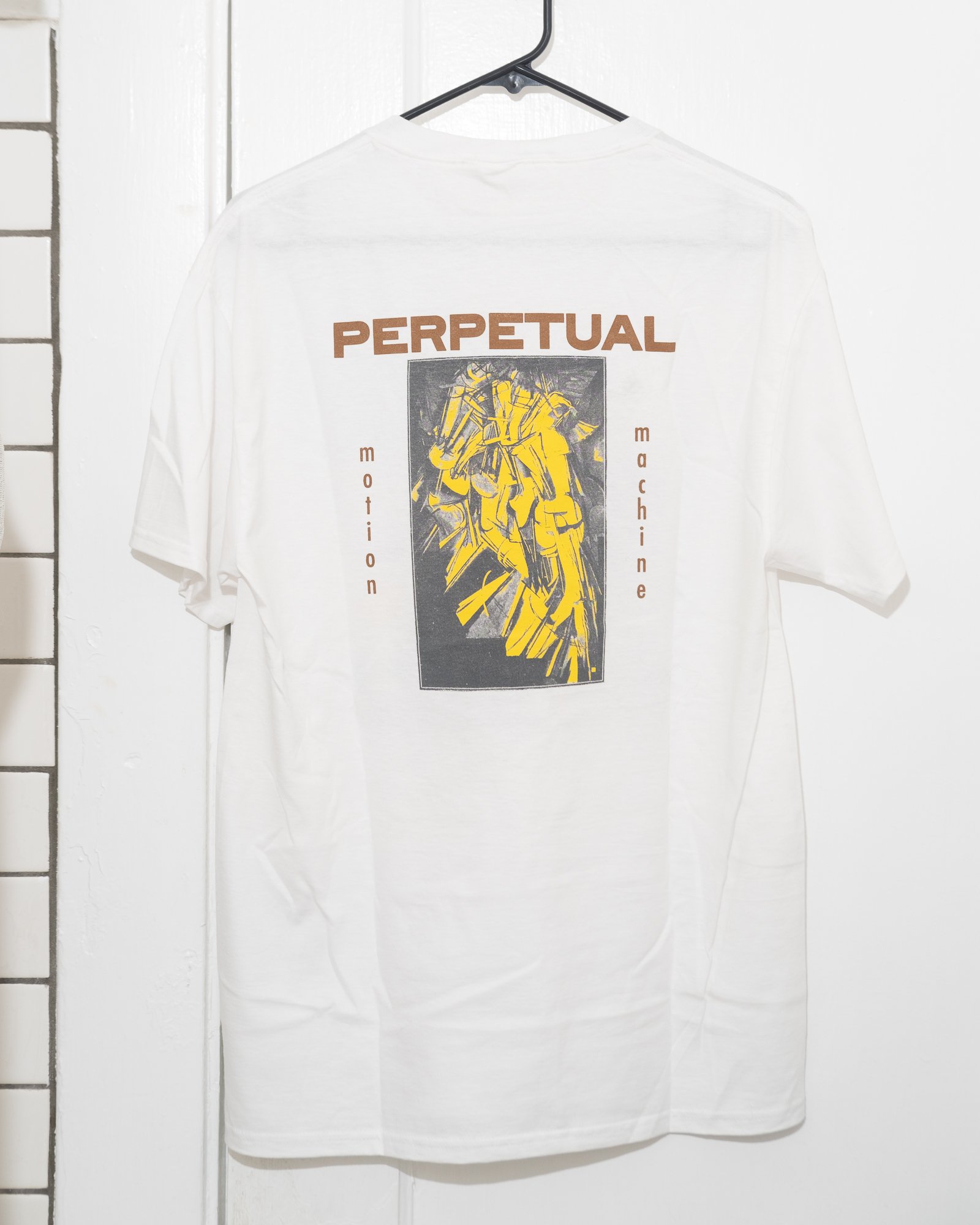Horses Reprint
I sold out of the first run of most sizes! The reprint is on an offwhite blank so is slightly different from the reference photos! The design remains the same and all sales come with an essay zine about the shirt :)
3XL and up sizes are still available in the shop. Please purchase those first if needed. If I run out of those before the presale ends I will make those sizes available here.
Three color screenprint front and back on off-white Fruit of the Loom blanks
Each shirt comes with a zine for the shirt!
Free shipping!
On June 15th 1878, Eadward Muybridge took twelve photos of a horse named Abe Edgington in just under one second. He then developed the exposed plates in front of an audience of assembled pressmen to ensure that there could be no doubt as to the veracity of the images he had recorded. With this small moment in time, Muybridge altered the course of human history. Years of experimentation and coordination had gone into this moment, and finally, it was possible for human eyes to see the heretofore imperceptible truth of what a camera saw. The results were surprising, if not altogether unexpected. Contrary to popular belief, a horse’s gallop was not composed of a series of graceful flying leaps through the air, but rather by a convulsive gathering and release of its legs beneath its body in a mechanical sequence.
The horse in motion, illus. by Muybridge. "Sallie Gardner," owned by Leland Stanford, running at a 1:40 gait over the Palo Alto track, 19 June 1878: 2 frames showing diagram of foot movements
This new reality contradicted many celebrated depictions of horses in seemingly mid gallop that had been produced in the years before. In fact, the “flying gallop” as it is called, constituted an identifiable style in painting and drawing of the early 19th century; and there is evidence of the flying gallop stretching back into antiquity. Two exemplary painters that practiced this style were Théodore Gericault and George Stubbs. Gericault is perhaps best known for his painting Raft of the Medusa, a piece that combined elements of history painting with the burgeoning Romantic movement in France. But Gericault’s lifelong passion was for horses and he nurtured that passion by painting them obsessively throughout his life including in an 1821 painting he produced of the Epsom Derby. Here, four horses are seen in close formation, traversing the canvas from right to left, against a cloudy, gray sky that is just breaking to allow the sun to shine through and illuminate the horses and their riders. All of the horses are frozen in a flying gallop, as if at the apex of their race and in the exact position that Muybridge would remove from the realm of physical possibility fifty years later. George Stubbs, another painter fond of horses, oftentimes depicted them in a similar flying gallop that communicated the dynamism and action of the moment. Stubbs was both self-trained as a painter and acknowledged as a master of painting animals, an honorific often attributed to his monomaniacal study of anatomy, in particular that of horses. It is ironic then, that such a master of anatomy was unable to comprehend the proper mechanism of horse locomotion. But perhaps Stubbs and Gericault were more concerned with capturing the feeling of a horse in motion than with the staid truth of the matter.
Baronet, 1791, George Stubbs
The 1821 Derby at Epsom, 1821 Thédore Gericault
Two Dapple-Gray Horses Exercising, 1822 Théodore Gericault
It is possible that by the time Muybridge’s sequence of photos was published the flying gallop style was on its way out. But the story does not end there. If Muybridge’s horse shut the door on Stubbs and Gericault’s horses, it also opened the window to new vistas of visual representation. The invention and proliferation of photography provoked a crisis of faith within the other fine arts, particularly painting. The Impressionists, the Fauvres, the Cubists, and countless other movements owe much to the newfound freedom of representation they enjoyed because of photography’s ascendant role in visual documentation. Yet even as the Cubists were breaking open the rules of geometric perspective, Marcel Duchamp was looking to the past in order to break the rules of the Cubist present. His 1912 painting Nude Descending a Staircase No. 2 depicted a human figure at discrete moments in its descent down a staircase. Duchamp’s innovation then, was to depict a subject from multiple moments in time in addition to multiple geometric perspectives in a single static image. Duchamp effectively reiterated the purpose of the “flying gallop”— the depiction of dynamic motion— but his solution was inextricably tied to the revelations of Muybridge’s twelve photos. Thus, the agent of the demise of one form of visual representation engendered the production of a new one.
Nude Descending a Staircase (No. 2), 1912, Marcel Duchamp
This process of invention, refutation, and reinvention is the process of history itself. Moreso, our past history molds our present reality, and as Paulo Freire has written “reality is really a process, undergoing constant transformation” (48, emphasis in original). Muybridge’s camera was an inflection point in this process. A moment in time when the path of history diverged and reality was reconstructed to accommodate the new status quo. Horses galloped one way until, suddenly, they galloped another. But even this sentence is misleading. Horses have always galloped the same way. What changed was how we saw them. As our vision changed, one mode of representation was retired, but new methods were created in its place. Thus the machine of history continued to move forward in ever perpetual motion.








